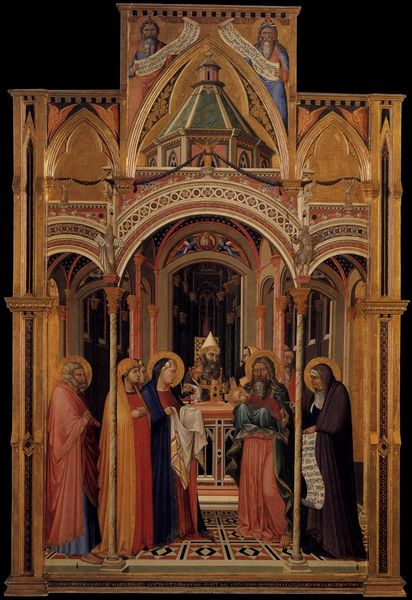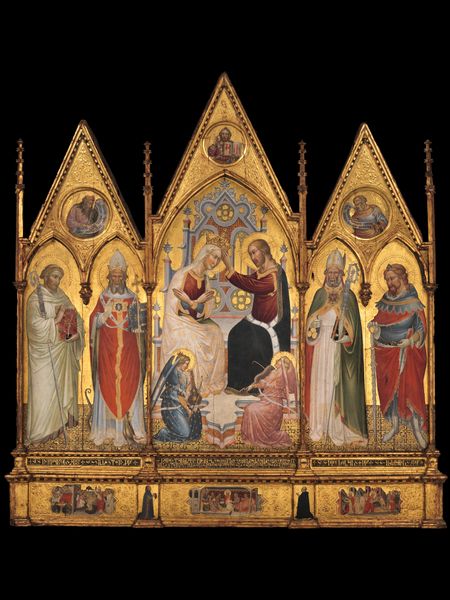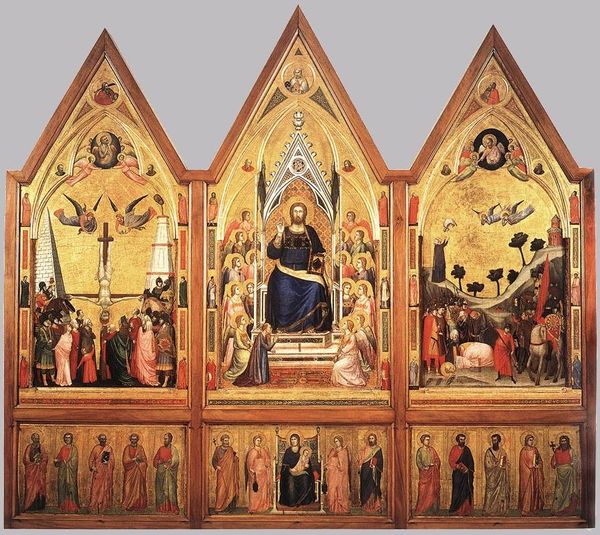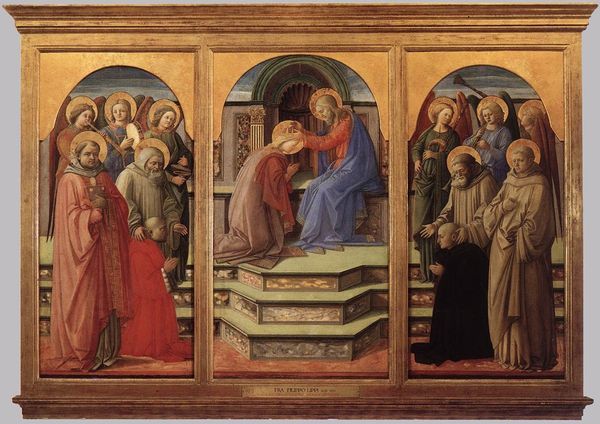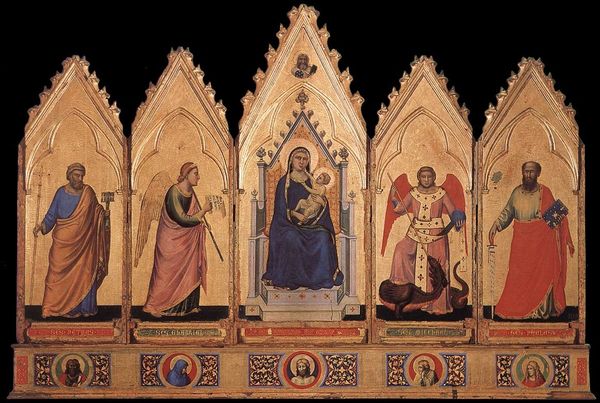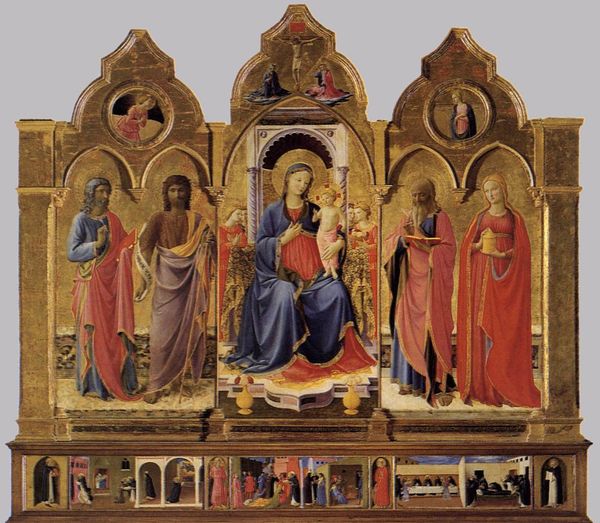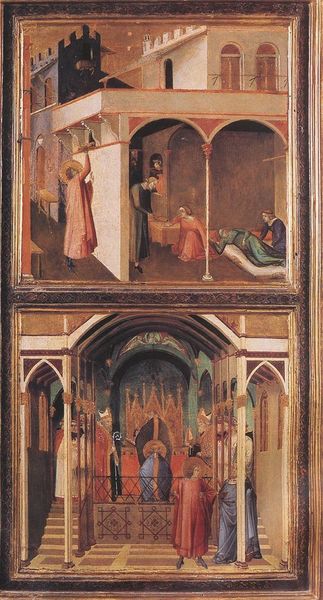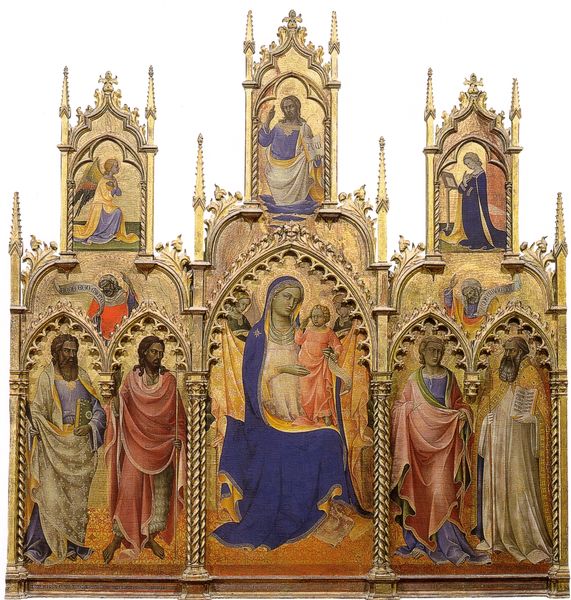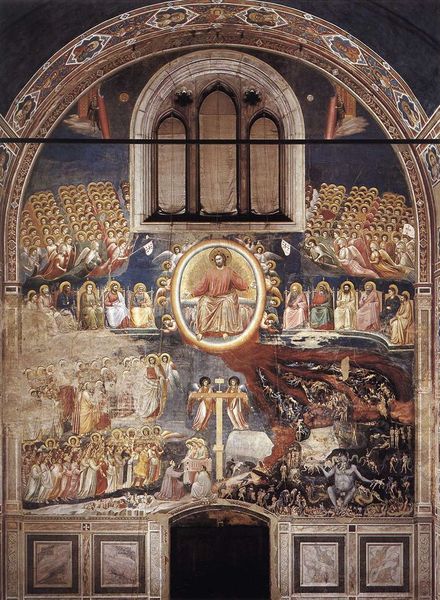
panel, tempera, painting
#
medieval
#
panel
#
narrative-art
#
tempera
#
painting
#
figuration
#
christianity
#
history-painting
#
italian-renaissance
#
early-renaissance
#
christ
Dimensions: 185 x 323 cm
Copyright: Public domain
Editor: So, this is the "Baroncelli Polyptych" by Giotto, painted around 1334. It's tempera on wood panel. I'm struck by how the gold leaf seems to overwhelm everything, emphasizing its value, I suppose. How should I think about this piece? Art Historian: I see a careful construction and allocation of precious resources to fulfill a commission. The use of tempera, demanding meticulous preparation and application, speaks volumes about artistic labor and guild control. And you're right to notice the gold leaf; think of its monetary worth reflecting earthly and divine power. Who was paying for it, and who had access to these paintings? Editor: Right, it was the Baroncelli family. How does knowing it was a private commission change things? Art Historian: Precisely! Knowing the patron informs everything. What were their aspirations, their concerns about lineage and piety? We need to examine the conditions of production – the workshops, the availability of materials, the social standing of Giotto himself. Consider the act of consumption, too: Who could access this visually rich artifact, and how did its location affect the audience’s experience and the Baroncelli's status? Editor: So, less about divine symbolism, more about earthly displays of wealth and power? Art Historian: It's never either/or. These materials had inherent symbolism, sure. But that symbolism becomes incredibly potent *because* of the wealth concentrated in this object. Think about the economic and social structures enabling this level of artistic patronage. Editor: Okay, I see how important context is. It's not just about beauty or faith; it's about money and materials shaping meaning. Thanks, this gives me so much to consider. Art Historian: Indeed, understanding art involves unveiling these layers of materiality, labor, and consumption, questioning boundaries between aesthetics and economics.
Comments
No comments
Be the first to comment and join the conversation on the ultimate creative platform.
